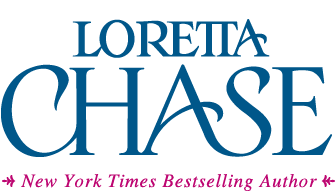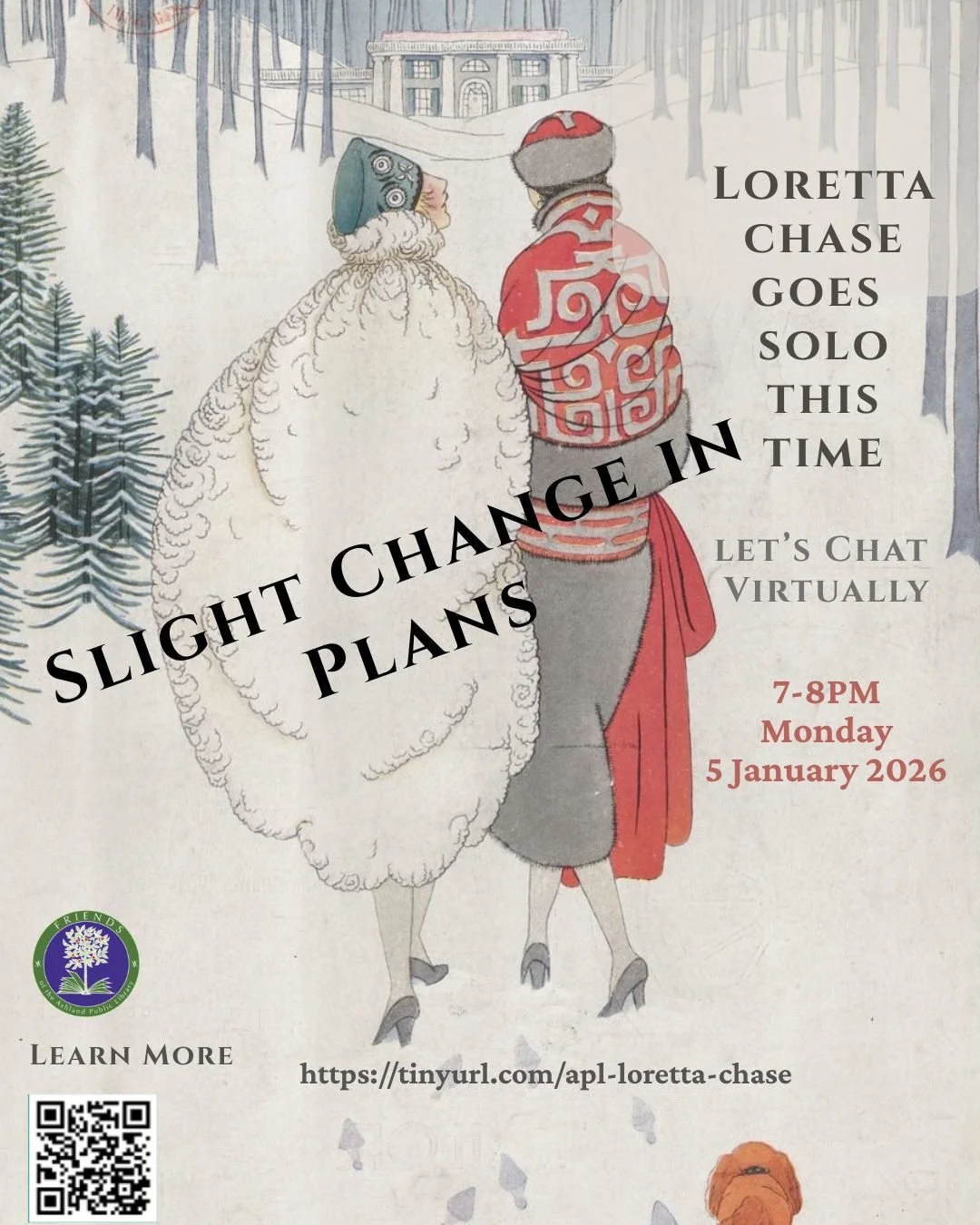Unexpected events have obliged historical fiction author Susan Holloway Scott to be absent from the forthcoming Two Nerdy History Girls session. That leaves me. While I cannot be the Two Nerdy History Girls (Susan & I have different strengths and areas of focus), I plan to do what I can, with the help of my host, Ashland Library Director Meena Jain. We’ll chat about my books, the research that goes into them, and the thrills and chills of exploring history. (Well, historical research is thrilling and chilling to me.)
Please go ahead and bring questions. I’ll answer to the best of my ability as a solo act. And we'll all look forward to having Susan back at a future session.
Details, details: Monday 5 January 7:00—8:00 PM Online - Zoom
More info here.
To register: https://tinyurl.com/apl-loretta-chase
Program sponsored by the Friends of the Ashland Public Library, collaborating with a multitude of Massachusetts Libraries to bring this program to their communities.



